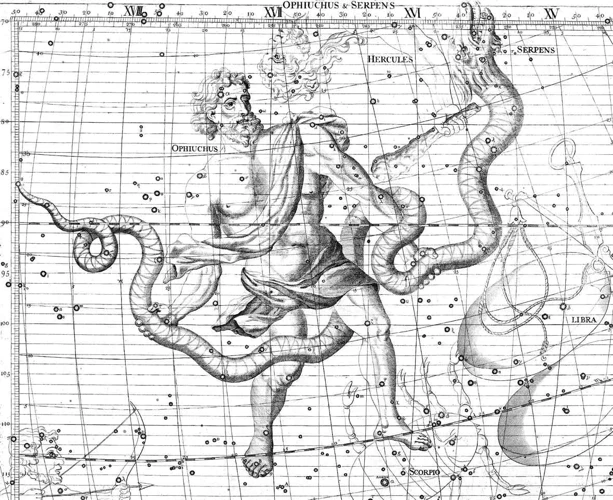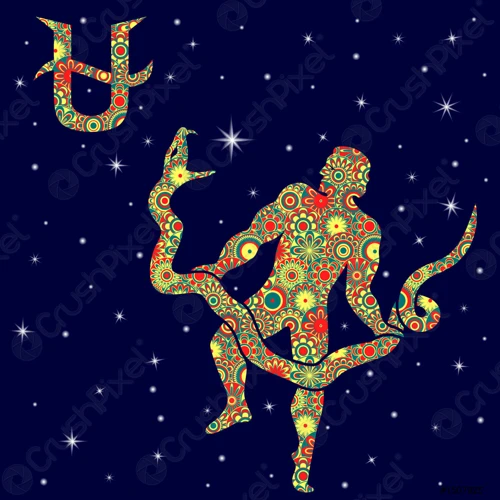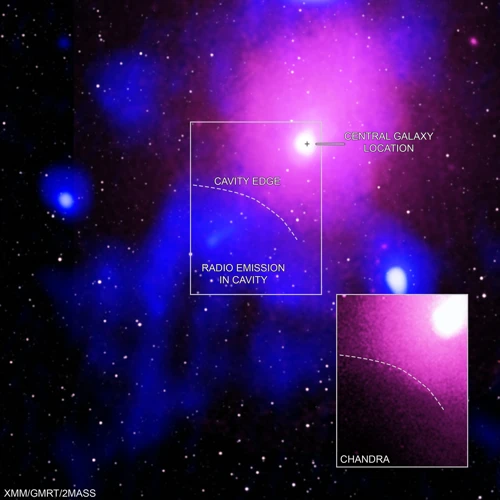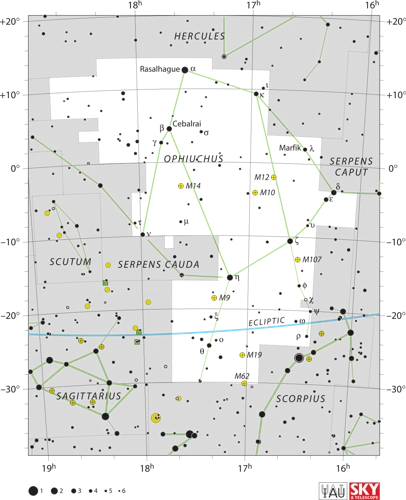Have you ever wondered why there are different zodiac systems? How do Western astrology and Vedic astrology relate to one another? If these questions have perplexed you, then you’ve come to the right place. In this detailed article, we will delve into the intriguing world of the Western and Vedic Zodiacs, exploring their origins, differences, and the significance of each. By understanding the variations in these astrological systems, you’ll gain a deeper appreciation for the diverse interpretations and insights they offer. So, let’s embark on this cosmic journey and unravel the mysteries behind the Western and Vedic Zodiacs.
Contents
- Western Zodiac
- Vedic Zodiac
- Differences and Comparisons
- Interpretation and Usage
- Conclusion
-
Frequently Asked Questions
- 1. Can I follow both Western and Vedic astrology?
- 2. Is my Western zodiac sign the same as my Vedic zodiac sign?
- 3. Are the personality traits associated with zodiac signs the same in Western and Vedic astrology?
- 4. What is the significance of precession of equinoxes in Vedic astrology?
- 5. How do Western and Vedic astrology interpret the role of nakshatras?
- 6. Are the horoscope readings for individual zodiac signs the same in Western and Vedic astrology?
- 7. Can I use Western and Vedic astrology to make important life decisions?
- 8. Are there any similarities between Western and Vedic astrology?
- 9. Can Western and Vedic astrology predict the future?
- 10. Can I switch from Western to Vedic astrology or vice versa?
- References
-
Frequently Asked Questions
- 1. How did the Western zodiac develop over time?
- 2. What are the zodiac signs and their corresponding dates in Western astrology?
- 3. What are the astrological focus and personality traits associated with Western zodiac signs?
- 4. What is the significance of the Vedic zodiac and its origins?
- 5. How do the zodiac signs and their corresponding dates differ in Vedic astrology?
- 6. What are the astrological focus and personality traits associated with Vedic zodiac signs?
- 7. How does the basis of calculation differ between Western and Vedic zodiacs?
- 8. What is the difference in zodiac sign allocation between Western and Vedic astrology?
- 9. What is the role of the precession of equinoxes in the differences between Western and Vedic astrology?
- 10. How can Western and Vedic zodiacs be mapped and interpreted together?
- References
- Read More
Western Zodiac

The Western Zodiac has a rich history that is fascinating to explore. It has its origins in ancient civilizations such as the Mesopotamians and Egyptians, who placed great importance on celestial observations and their connection to human behavior. Over time, these observations evolved into the twelve zodiac signs that are commonly known today. Each sign corresponds to specific dates in the calendar year and is associated with distinct personality traits and astrological focus. From the adventurous and fiery Aries to the nurturing and sensitive Cancer, each sign offers unique insights into one’s character. The Western Zodiac continues to captivate people around the world, with millions turning to horoscopes and astrological readings to gain a better understanding of themselves and their relationships. So, whether you’re a curious skeptic or a devoted believer, the Western Zodiac provides a fascinating lens through which to explore the intricacies of human nature and the cosmos.
1. Origins and Development
The origins and development of the Western Zodiac can be traced back to ancient civilizations such as the Mesopotamians and Egyptians, who were early pioneers in studying celestial bodies and their influence on human life. The Mesopotamians, known for their advancements in astronomy, divided the sky into twelve equal sections, each associated with specific constellations. This astrological system, known as the Babylonian or Chaldean Zodiac, laid the foundation for the development of the Western Zodiac. Later, the Greeks adopted these astrological practices and incorporated their own mythology into the zodiac signs. For example, Aries is associated with the ram due to the Golden Fleece myth, while Gemini represents the twins Castor and Pollux. The Romans further refined the Western Zodiac, assigning corresponding dates to the zodiac signs that align with the changing seasons. This development allowed individuals to associate their birth dates with specific zodiac signs, thus connecting them to a particular set of personality traits and astrological predictions. The Western Zodiac continues to evolve and gain significance in modern astrology, providing individuals with insights into their character and charting their astrological journeys. If you’re interested in exploring more about the historical context and cultural significance of celestial observations, you can read about the fascinating history of planetary alignments.
2. Zodiac Signs and Corresponding Dates
The second aspect to explore in the Western Zodiac is the relationship between the zodiac signs and their corresponding dates. This arrangement is integral to understanding the astrological interpretations associated with each sign. The zodiac is divided into twelve equal parts, with each part representing a specific time period within the year. These dates may slightly vary depending on the system used, but generally, the Western Zodiac begins with Aries on March 21st or 22nd and ends with Pisces on February 18th or 19th. Each sign spans approximately 30 days, although the actual duration can vary due to the complexities of the Earth’s orbit and the precession of equinoxes. It is important to note that the dates associated with each sign determine the Sun’s position at the time of birth and are central to constructing an individual’s astrological birth chart. By knowing the zodiac signs and their corresponding dates, astrologers and enthusiasts can analyze how celestial influences may impact an individual’s personality traits, behavior, and life events. So, whether you’re a fiery Leo born in the heat of summer or a practical and grounded Taurus born during the spring, understanding the connection between zodiac signs and their corresponding dates adds depth to the interpretation of Western astrology.
3. Astrological Focus and Personality Traits
In the realm of astrology, the astrological focus and personality traits associated with each zodiac sign are of great interest. In Western astrology, the astrological focus of each sign is determined by its ruling planet. For example, Aries, ruled by Mars, is associated with action, ambition, and a pioneering spirit, while Taurus, ruled by Venus, is known for its appreciation of beauty, stability, and sensuality. Gemini, ruled by Mercury, embodies curiosity, communication, and adaptability. Moving on to Cancer, ruled by the Moon, emotional sensitivity, intuition, and nurturing qualities come to the forefront. Leo, ruled by the Sun, radiates confidence, creativity, and leadership. The traits of each sign continue in this manner, with each ruling planet influencing different aspects of personality. Over in Vedic astrology, the focus is placed on lunar mansions called Nakshatras. These 27 Nakshatras have unique characteristics, with each sign being associated with a specific Nakshatra. The Nakshatras add depth and specificity to the interpretation of personality traits, providing a more nuanced understanding of an individual’s astrological profile. In both Western and Vedic astrology, combining the astrological focus and personality traits associated with each zodiac sign allows for a dynamic and comprehensive exploration of one’s unique qualities and potential.
Vedic Zodiac

The Vedic Zodiac, also known as the Indian or Hindu Zodiac, holds immense significance in Indian astrology and spirituality. Its origins can be traced back thousands of years to the ancient scriptures of India, particularly the Vedas. The Vedic Zodiac consists of twelve signs, just like the Western Zodiac, but the allocation of signs differs. In the Vedic system, each sign is associated with specific dates as per the Vedic calendar. The Vedic Zodiac extends beyond the Sun signs and takes into account the position of the Moon and other celestial bodies at the time of birth, resulting in a more comprehensive astrological analysis. Additionally, the Vedic system places great emphasis on the role of Nakshatras, which are lunar mansions that further refine the individual’s characteristics and life path. This holistic approach to astrology in the Vedic Zodiac provides a deeper understanding of one’s personality, life events, and spiritual growth. So, whether you’re seeking guidance, self-discovery, or a connection to ancient wisdom, the Vedic Zodiac offers a profound perspective on the intricate interplay between the cosmos and human existence.
1. Origins and Significance
The origins of the Vedic Zodiac can be traced back to the ancient Indian civilization and the scriptures known as the Vedas. These texts, which date back thousands of years, contain a wealth of knowledge about various subjects, including astrology. In Vedic astrology, the zodiac plays a significant role in determining an individual’s life path and destiny. The Vedic Zodiac, also known as the Sidereal Zodiac, is based on the actual positions of the planets and stars in the sky at the time of a person’s birth. This system takes into account the precession of the equinoxes, which is the gradual shift of the Earth’s axis over time. The Vedic Zodiac is deeply rooted in the religious and spiritual traditions of India, where astrology is seen as a tool for self-discovery, guidance, and understanding one’s karmic journey. The significance of the Vedic Zodiac lies in its ability to provide insight into an individual’s strengths, weaknesses, and life lessons. By understanding the unique placement of the planets and their influence on different areas of life, Vedic astrology aims to guide individuals towards personal growth, spiritual development, and fulfillment. So, the Vedic Zodiac carries profound significance in the lives of those who follow this ancient astrological tradition.
2. Zodiac Signs and Corresponding Dates
The Zodiac Signs and Corresponding Dates play a crucial role in Western astrology. The twelve zodiac signs are Aries, Taurus, Gemini, Cancer, Leo, Virgo, Libra, Scorpio, Sagittarius, Capricorn, Aquarius, and Pisces. Each sign corresponds to specific dates of the year, marking the sun’s position at the time of a person’s birth. The dates associated with each sign are commonly known and followed by astrologers and enthusiasts alike. For example, Aries spans from March 21st to April 19th, while Taurus covers April 20th to May 20th. These dates provide a framework for astrological interpretations and help individuals identify with their zodiac sign’s characteristics and traits. It’s important to note that the Western Zodiac operates on the tropical system, which links the signs to the position of the sun relative to the Earth’s equator. This approach categorizes individuals based on the time of the year they were born and provides a foundation for Western astrological predictions and readings. Understanding the Zodiac Signs and Corresponding Dates allows individuals to explore their personal astrological charts and gain insights into their strengths, weaknesses, and compatibility with other signs. It’s an intriguing and ever-evolving framework that continues to captivate and mystify people throughout the ages.
3. Astrological Focus and Personality Traits
When it comes to astrological focus and personality traits, the Western Zodiac assigns specific characteristics to each of its twelve zodiac signs. This helps individuals gain insights into their own behavior, as well as their compatibility with others. Let’s take a closer look at the astrological focus and personality traits associated with each sign:
1. Aries (March 21 – April 19): Known for their courageous and determined nature, Aries individuals have a strong drive to succeed. They are natural leaders, fiercely independent, and thrive in dynamic environments.
2. Taurus (April 20 – May 20): Taureans are known for their strong willpower and sense of stability. They value security and material comforts, and are often reliable and patient individuals.
3. Gemini (May 21 – June 20): Geminis are characterized by their versatility and adaptability. They have a curious nature, love to communicate, and are often skilled at networking and building connections.
4. Cancer (June 21 – July 22): Cancerians are known for their empathetic and nurturing nature. They are highly intuitive and value emotional connections and family bonds.
5. Leo (July 23 – August 22): Leos are natural-born leaders who love to be in the spotlight. They are confident, expressive, and enjoy being the center of attention.
6. Virgo (August 23 – September 22): Virgos are known for their practicality and attention to detail. They have a strong sense of responsibility, are organized, and strive for perfection.
7. Libra (September 23 – October 22): Librans are diplomatic and cooperative individuals. They value harmony and fairness, and are often skilled at finding compromises and maintaining balance.
8. Scorpio (October 23 – November 21): Scorpios are characterized by their intense and passionate nature. They are determined, secretive, and have a strong sense of loyalty.
9. Sagittarius (November 22 – December 21): Sagittarians are adventurous and optimistic individuals. They have a thirst for knowledge, love to explore new ideas and cultures, and are often associated with a strong sense of freedom.
10. Capricorn (December 22 – January 19): Capricorns are known for their ambition and determination. They are disciplined, responsible, and often excel in their chosen fields.
11. Aquarius (January 20 – February 18): Aquarians are independent thinkers and visionaries. They value intellectual pursuits, have a humanitarian streak, and often strive to make a positive impact on society.
12. Pisces (February 19 – March 20): Pisceans are compassionate and intuitive individuals. They possess great empathy, creativity, and often have a deep connection to the arts and spirituality.
These astrological focus and personality traits within the Western Zodiac provide a general framework for understanding individual characteristics and how they might interact with others. It is important to note that while these traits are associated with each zodiac sign, individuals are unique and may exhibit a combination of traits from different signs based on their birth chart and personal experiences. Understanding these traits can offer valuable insights, but it’s important to approach astrology with an open and discerning mind.
Differences and Comparisons

The differences and comparisons between the Western and Vedic Zodiacs are intriguing and reveal the diverse beliefs and interpretations of astrological concepts. One key distinction lies in the basis of calculation. The Western Zodiac is primarily determined by the position of the sun at the time of a person’s birth, while the Vedic Zodiac takes into account the positions of both the sun and the moon. Another significant difference is the allocation of zodiac signs. In the Western Zodiac, the signs are evenly divided into twelve equal segments of 30 degrees each. In contrast, the Vedic Zodiac divides the zodiac into uneven segments based on the 27 Nakshatras, or lunar mansions, which add an extra layer of complexity and nuance to astrological readings. Additionally, the precession of equinoxes plays a role in the disparities between these two zodiac systems. The gradual shift in the Earth’s axial tilt affects the alignment of the zodiac signs over time, resulting in a variance of approximately 23 degrees between the Western and Vedic Zodiacs. These distinct characteristics highlight the diverse approaches and traditions that have shaped both systems and offer invaluable insights into the intricate tapestry of astrology.
1. Basis of Calculation
The basis of calculation plays a crucial role in differentiating the Western Zodiac from the Vedic Zodiac. In the Western Zodiac, the calculation is primarily based on the tropical system, which uses the position of the Sun on the spring equinox as its starting point. This means that the Western Zodiac aligns the zodiac signs with the seasons, with Aries marking the beginning of spring in the Northern Hemisphere. On the other hand, the Vedic Zodiac follows the sidereal system, which takes into account the actual positions of the constellations. This system considers the fixed stars as reference points and uses the position of the Moon at the time of an individual’s birth to determine their zodiac sign. As a result, there is a slight discrepancy between the two zodiac systems, with the Vedic Zodiac being approximately 23 degrees behind the Western Zodiac due to the precession of equinoxes. This distinction in the basis of calculation highlights the different perspectives and approaches taken by Western and Vedic astrology. To gain a deeper understanding of how these calculations influence astrological interpretations, it is crucial to delve into the historical and cultural contexts that shape these fascinating systems. (To learn more about the history of planetary alignments, check out this intriguing article.)
2. Zodiac Sign Allocation
Zodiac sign allocation varies between the Western and Vedic Zodiac systems. In the Western Zodiac, the allocation of zodiac signs is determined by the position of the Sun relative to the twelve constellations along the ecliptic. Each sign spans approximately 30 degrees, giving rise to the familiar and widely recognized sequence of Aries, Taurus, Gemini, Cancer, Leo, Virgo, Libra, Scorpio, Sagittarius, Capricorn, Aquarius, and Pisces. These signs are based on the Earth’s orbit around the Sun and are aligned with the seasons. On the other hand, in the Vedic Zodiac, the zodiac sign allocation is based on the position of the Moon at the time of birth. This system divides the ecliptic into twenty-seven equal parts, known as Nakshatras. Each Nakshatra is associated with specific attributes and qualities, providing a more nuanced and detailed perspective on one’s personality and life path. The Vedic Zodiac considers the Moon’s position to be more influential in defining one’s character, emotions, and destiny. This distinction in the allocation of zodiac signs highlights the diverse astrological approaches of the Western and Vedic systems and conveys the significance of celestial bodies in shaping human lives. If you want to learn more about fascinating mythological stories related to astrology, check out the article on the Mazu Goddess in Chinese Myth.
3. Precession of Equinoxes
The Precession of Equinoxes is a key difference between the Western and Vedic Zodiacs. It refers to the gradual shift of the Earth’s axis, causing the positions of the equinoxes and solstices to change over time. In the Western Zodiac, the signs are aligned with the positions of the constellations as they were roughly 2,000 years ago during the Hellenistic period. However, due to the precession, the actual positions of the constellations have shifted. This means that the Western Zodiac signs no longer align with their corresponding constellations in the sky. On the other hand, the Vedic Zodiac takes into account the precession of equinoxes, and the signs are aligned with the current positions of the constellations. This difference in alignment leads to variations in the dates associated with each zodiac sign between the Western and Vedic systems. It’s important to note that while the Western Zodiac focuses more on the personality traits and psychological aspects of each sign, the Vedic Zodiac places greater emphasis on the predictive and karmic influences associated with the different signs. The significance of the precession of equinoxes highlights the evolving nature of astrology and the need to consider the shifting celestial movements when interpreting astrological charts and readings. To delve further into the intriguing similarities and differences between the Western and Vedic Zodiacs, check out our comprehensive article.
4. Role of Nakshatras
The role of Nakshatras is a key aspect of the Vedic Zodiac system. Nakshatras are lunar mansions or star clusters that play a significant role in Vedic astrology and are believed to have a profound influence on individual characteristics and life events. In Vedic astrology, there are 27 Nakshatras, each associated with a specific set of qualities and ruling deity. These Nakshatras are further divided into four groups, known as Padas, which provide additional insights into various aspects of a person’s life. Each Nakshatra is associated with certain traits, tendencies, and energies that influence an individual’s personality, behavior, and destiny. These celestial entities help astrologers provide more accurate and detailed readings by analyzing the specific Nakshatra a person is born under and its interactions with other astrological factors. Understanding the role of Nakshatras adds a deeper layer of complexity and nuance to Vedic astrology, allowing for a more comprehensive understanding of an individual’s life path and purpose. So, whether you’re new to Vedic astrology or a seasoned practitioner, exploring the significance of Nakshatras can provide valuable insights into the mystical world of Vedic astrology.
References:
– Article: Monkey King in Chinese Literature
Interpretation and Usage

Interpretation and usage of the Western and Vedic Zodiacs vary significantly. In Western astrology, horoscopes and personalized readings are popular among those seeking guidance and insight into their lives. These spiritual interpretations often focus on individual traits, compatibility with others, and predictions for the future. On the other hand, Vedic astrology takes a more holistic approach, considering not only the individual’s birth chart but also their karma, dharma, and spiritual path. Vedic astrologers delve into the deeper layers of a person’s life and offer guidance based on their understanding of the soul’s journey. The Vedic Zodiac is also utilized in other fields such as Ayurveda and Indian weddings, where astrological compatibility between partners is considered crucial. While both systems provide valuable insights, it is fascinating to explore the contrasting interpretations and usage of the Western and Vedic Zodiacs to gain a more comprehensive understanding of astrology’s diverse applications.
1. Popular Western Zodiac Readings
Popular Western Zodiac readings are widely sought after by individuals looking for insights into their personalities, relationships, and life events. Astrologers, both professional and amateur, provide these readings based on the alignment of the planets and the position of the Sun at the time of a person’s birth. These readings often focus on the twelve zodiac signs and their corresponding personality traits. Depending on the individual’s birthdate, their sun sign is determined, and astrologers interpret the characteristics associated with that particular sign. For example, those born under the sign of Leo are often described as confident, generous, and natural-born leaders, while Gemini individuals are known for their adaptability, curiosity, and excellent communication skills. By examining the natal chart, which takes into account the positions of other planets at the time of birth, astrologers can provide a more comprehensive analysis of an individual’s nature and life experiences. Western Zodiac readings also explore compatibility between different signs, allowing individuals to gain insights into their relationships and how they may interact with others. While skeptics question the scientific validity of these readings, many people find comfort and guidance in them, using them as tools for self-reflection and personal growth. It’s important to note that Western Zodiac readings are not meant to predict specific events with certainty but rather offer broad interpretations of personality traits and potential life experiences based on astrological symbolism and archetypes. Whether embraced as a form of entertainment or as a belief system, Western Zodiac readings continue to captivate and intrigue individuals seeking a deeper understanding of themselves and the world around them.
2. Vedic Zodiac and Its Deeper Visions
The Vedic Zodiac, known as “Jyotish” in Sanskrit, offers a profound and multifaceted approach to astrology. It is deeply rooted in ancient Indian traditions and is considered a sacred science that encompasses not only celestial observations but also spiritual and karmic influences. The Vedic Zodiac goes beyond the twelve familiar signs of the Western Zodiac and incorporates twenty-seven lunar mansions known as “Nakshatras.” These Nakshatras play a crucial role in Vedic astrology, as they provide further nuance and depth to understanding a person’s character and life path. Each Nakshatra is associated with specific qualities, ruling deities, and planetary energies, expanding the astrologer’s ability to offer intricate insights into an individual’s personality and destiny. Vedic astrology also places a strong emphasis on the concept of “Dharma,” which refers to a person’s duty and purpose in life. By understanding one’s Dharma and aligning with it, individuals are believed to attain spiritual growth and fulfillment. The Vedic Zodiac not only offers guidance on mundane matters but also provides a spiritual framework for personal development and self-realization. Its profound visions and holistic approach make it a valuable tool for those seeking a deeper understanding of themselves and their place in the universe.
3. Mapping Western and Vedic Zodiacs
Mapping the Western and Vedic Zodiacs requires a careful examination of their distinct methodologies and systems of interpretation. While the Western Zodiac is based on the twelve-month calendar year, the Vedic Zodiac takes into account the movement of the Sun and the Moon within specific constellations. This fundamental difference in calculation presents a challenge when attempting to align the two zodiac systems. There are techniques available, such as ayanamsa, which is a measurement of the gap between the tropical and sidereal zodiacs, that can be used to bridge the gap between the Western and Vedic Zodiacs. However, it’s important to note that these techniques can vary, leading to different results. The role of Nakshatras, which are lunar mansions in the Vedic Zodiac, adds another layer of complexity when mapping the two systems. Some astrologers attempt to reconcile the Western and Vedic Zodiacs by combining both approaches and considering the Western Sun sign along with the Vedic ascendant or the Moon sign. This provides a more holistic interpretation that incorporates aspects of both zodiac systems. Ultimately, mapping the Western and Vedic Zodiacs requires an understanding of their unique methodologies and a willingness to explore the connections and differences between them. It allows astrologers and enthusiasts to appreciate the diverse approaches to astrology and discover new insights into their own personalities and life paths.
Conclusion

In conclusion, understanding the differences between the Western and Vedic Zodiacs offers a broader perspective on the world of astrology. While both systems share historical roots, their calculations, zodiac sign allocations, and interpretations vary significantly. The Western Zodiac, with its twelve signs based on the sun’s position, has become widely popular in Western cultures and is often associated with horoscopes and personality readings. On the other hand, the Vedic Zodiac, rooted in ancient Indian traditions, considers the moon’s position and includes the influence of nakshatras, offering a more in-depth understanding of one’s personality and life experiences.
By exploring both systems, we can appreciate the intricacies and diverse interpretations of astrology. While some may rely on popular Western zodiac readings for guidance and self-reflection, others may seek the deeper visions and guidance offered by the Vedic zodiac. Both systems have their merits and can provide valuable insights if approached with an open mind.
Ultimately, whether you resonate more with the Western or Vedic Zodiac, it is important to remember that astrology should be embraced as a tool for self-reflection and personal growth. It can offer guidance and awareness, but it should not be used as a definitive predictor of one’s future. The cosmic dance of the stars and planets is a mysterious and ever-evolving journey, and astrology serves as a map to help us navigate through life’s ups and downs. So, embrace the wisdom of both the Western and Vedic Zodiacs and use them as a means to better understand yourself and the world around you.
Frequently Asked Questions

1. Can I follow both Western and Vedic astrology?
Yes, many people find value in understanding and incorporating both Western and Vedic astrology into their lives. Each system offers unique perspectives and insights, allowing for a more comprehensive understanding of oneself and the world.
2. Is my Western zodiac sign the same as my Vedic zodiac sign?
Not necessarily. The Western and Vedic zodiacs have different methods of calculation and allocate zodiac signs based on different dates. It’s important to consult a professional astrologer or refer to reliable resources for accurate zodiac sign determination in each system.
3. Are the personality traits associated with zodiac signs the same in Western and Vedic astrology?
While there may be some similarities, the personality traits associated with zodiac signs can differ between Western and Vedic astrology. Their interpretations are influenced by different cultural and astrological traditions, resulting in distinct character descriptions.
4. What is the significance of precession of equinoxes in Vedic astrology?
In Vedic astrology, the precession of equinoxes refers to the gradual shift in the alignment of the Earth’s axis, resulting in a change in the position of the zodiac signs over time. This phenomenon is considered when calculating the positions of planets and determining horoscopes.
5. How do Western and Vedic astrology interpret the role of nakshatras?
In Vedic astrology, nakshatras are a crucial component of chart interpretation. They represent specific star constellations and are used to assess various aspects of life, including compatibility, career choices, and personality traits. Western astrology does not emphasize nakshatras to the same extent as Vedic astrology.
6. Are the horoscope readings for individual zodiac signs the same in Western and Vedic astrology?
No, the horoscope readings can differ between Western and Vedic astrology. While both systems provide general predictions for each zodiac sign, the specific focus, emphasis, and astrological techniques used may vary, resulting in different horoscope interpretations.
7. Can I use Western and Vedic astrology to make important life decisions?
Astrology can be a valuable tool for gaining insight, but it is important to approach it with an open mind and use it as a guide rather than solely relying on it for decision-making. It is always recommended to seek professional advice and consider multiple factors when making important life decisions.
8. Are there any similarities between Western and Vedic astrology?
Yes, there are some similarities between Western and Vedic astrology. Both systems aim to study the influence of celestial bodies on human life, and both use birth charts as a fundamental tool for interpretation. However, the methods of calculation, zodiac signs, and astrological techniques differ between the two systems.
9. Can Western and Vedic astrology predict the future?
Astrology is not intended to predict the future with absolute certainty. It provides insights and possibilities based on the positions of celestial bodies at the time of birth. The future is influenced by various factors, including personal choices and external circumstances, which astrology cannot fully determine.
10. Can I switch from Western to Vedic astrology or vice versa?
Switching from one astrological system to another is possible, but it requires understanding the foundational differences and recalculating your astrological charts. It is recommended to consult an astrologer or refer to reliable resources when transitioning between Western and Vedic astrology.
References
- What are the key differences between Vedic and Western …
- Vedic vs Western Astrology: The Distinctions and …
- Difference between Vedic Astrology & Western Astrology
Frequently Asked Questions

1. How did the Western zodiac develop over time?
The Western zodiac has its roots in ancient Mesopotamian cultures, specifically in Babylonian astrology. Over time, it evolved through Hellenistic and Roman influences to become the popular system we know today.
2. What are the zodiac signs and their corresponding dates in Western astrology?
In Western astrology, the zodiac signs and their corresponding dates are as follows: Aries (March 21 – April 19), Taurus (April 20 – May 20), Gemini (May 21 – June 20), Cancer (June 21 – July 22), Leo (July 23 – August 22), Virgo (August 23 – September 22), Libra (September 23 – October 22), Scorpio (October 23 – November 21), Sagittarius (November 22 – December 21), Capricorn (December 22 – January 19), Aquarius (January 20 – February 18), and Pisces (February 19 – March 20).
3. What are the astrological focus and personality traits associated with Western zodiac signs?
The astrological focus and personality traits associated with Western zodiac signs vary. For example, Aries is known for being courageous and independent, while Taurus is often associated with practicality and reliability. Gemini is known for adaptability and curiosity, and Cancer is often seen as nurturing and emotional. These characteristics continue throughout the rest of the zodiac signs, each with their own unique traits.
4. What is the significance of the Vedic zodiac and its origins?
The Vedic zodiac holds deep cultural and spiritual significance in Hindu astrology. It originated from ancient Indian scriptures called the Vedas, which were highly revered and considered a source of profound wisdom.
5. How do the zodiac signs and their corresponding dates differ in Vedic astrology?
In Vedic astrology, the zodiac signs and their corresponding dates align differently compared to Western astrology. For example, the Vedic zodiac considers Aries as starting around April 14th and ending on May 14th, Taurus begins on May 15th and ends on June 14th, and so on.
6. What are the astrological focus and personality traits associated with Vedic zodiac signs?
The astrological focus and personality traits associated with Vedic zodiac signs also vary. For instance, Aries in Vedic astrology is often associated with confidence and ambition, while Taurus is known for its practicality and determination. Gemini is seen as intellectual and curious, and Cancer is known for its emotional depth and nurturing nature.
7. How does the basis of calculation differ between Western and Vedic zodiacs?
The basis of calculation differs between Western and Vedic zodiacs. Western astrology primarily considers the position of the Sun at the time of an individual’s birth, while Vedic astrology takes into account the positions of multiple celestial bodies, including the Moon, in addition to the Sun.
8. What is the difference in zodiac sign allocation between Western and Vedic astrology?
In Western astrology, the zodiac sign allocation is fixed and is based on the Gregorian calendar. However, in Vedic astrology, the concept of “nakshatras” is used, which divides the zodiac into 27 equal parts, providing greater specificity and nuance in the allocation of zodiac signs.
9. What is the role of the precession of equinoxes in the differences between Western and Vedic astrology?
The precession of equinoxes is an astronomical phenomenon that causes the Earth’s rotational axis to slowly change over time. This movement impacts the calculation of zodiac signs. Western astrology does not account for the precession of equinoxes, while Vedic astrology does, leading to a slight discrepancy between the two systems.
10. How can Western and Vedic zodiacs be mapped and interpreted together?
Mapping Western and Vedic zodiacs together requires examining the positions of celestial bodies in both systems and relating them to each other. Astrologers skilled in both systems often offer unique interpretations and readings that take into account the strengths of both Western and Vedic astrology.







